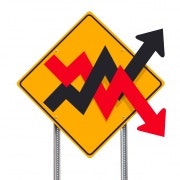Yield stocks will pay dividends
Summary: High-yielding stocks have been the market darlings for some time, particularly for investors closer to retirement seeking out better returns than cash. Expectations are that more corporates will move to increase their dividend payout ratios to investors. |
Key take-out: The Australian equity market is a good example of how dividend-focused global equity investors could become. |
Key beneficiaries: General investors. Category: Income. |
The search for yield has boosted dividend-paying equities. The relative valuation on stocks with above-average dividend yield already looks rich on some measures. However, the factors pushing investors into equity yield seem likely to persist for the foreseeable future. Amidst what I think will be relatively mediocre returns for equities over the medium term, dividends may be an outperforming theme.
Several factors have pushed investors to place an increasing premium on dividend-paying equities. Most of those factors seem likely to remain in place for now:
First, the yield on debt instruments is exceptionally low. Given central bankers are willing ‘to do what it takes’, it seems likely that rates will remain low for some time. (And, of course, the process of normalising rates – whenever it comes – will for a time likely impose mark-to-market losses on many fixed income assets.)
Second, economic and earnings growth remains tepid. That reduces the relative attractiveness of cyclical equities that are leveraged to the economic cycle.
Third, with global profits already at a relatively high share of global GDP, it seems unlikely that earnings can grow faster than GDP for a sustained period. With nominal GDP itself relatively sluggish, that points to ongoing mediocre earnings growth. This continues recent history: forecast EPS for global equities (MSCI AC index) are the same now as two years ago.
Fourth, ageing baby-boomers, who control a disproportionate share of invested capital, are moving from the stage of building up their nest egg to living off the nest egg. The investment implication of changing demographics has been discussed by my colleagues Jessica Alsford, Bruce Hamilton, Anil Sharma and Graham Secker (Global Ageing #2: Potential Impact On Financial Assets, 18 March). Exhibit 1 shows the correlation between the S&P 500 dividend yield and the percentage of Americans aged 35-59.
Exhibit 2 shows, for the UK, that baby-boomers on the cusp of retirement hold higher-than-average wealth. It’s not just that households about to retire have above-average wealth – that is normally the case – but that the current about-to-retire cohort is unusually large as a share of the total population. Moreover, while this demographic shift is largely (but not solely) a Western world issue, the important point for investors is that the US, Western Europe and Japan account for 75% of global financial assets. Other developed economies account for another 9%.
The fifth factor is that in most markets the payout ratio (the percentage of earnings distributed as dividends) is relatively low. This means that corporates can, for a time, increase dividends faster than earnings. This could partly reflect a shift away from distributing earnings via buybacks to dividends.
The question, of course, is whether corporates will increase dividend payout ratios. My view is that they will if the incentives are right – and the incentives appear to be changing. Adam Parker, our US equity strategist, notes that S&P CEOs are now more likely to have stock than options (Exhibit 3) – so they receive dividend cheques, along with other owners.
Moreover, share price performance has clearly rewarded capital returns (either dividends or buybacks) over the past three years, versus alternative uses for corporate capital, such as increased investment spending (Exhibit 4).
In my view, the Australian equity market is a good example of how dividend-focused global equity investors could become – and how corporates do respond to changed incentives. Australia has had a far higher payout ratio than other developed markets over the past 20 years. This in part reflects so-called dividend imputation, which raises the tax effectiveness of distributing dividends to shareholders (Exhibit 5).
One final point: there appears to be almost no correlation between payout ratios and EPS growth (Exhibit 6). This implies that higher payout ratios would not, by themselves, imply lower EPS growth. It also suggests that any historical valuation discount for stocks with above-average payout ratios cannot be justified by EPS growth.
Gerard Minack is head of global developed market strategy at Morgan Stanley.
















